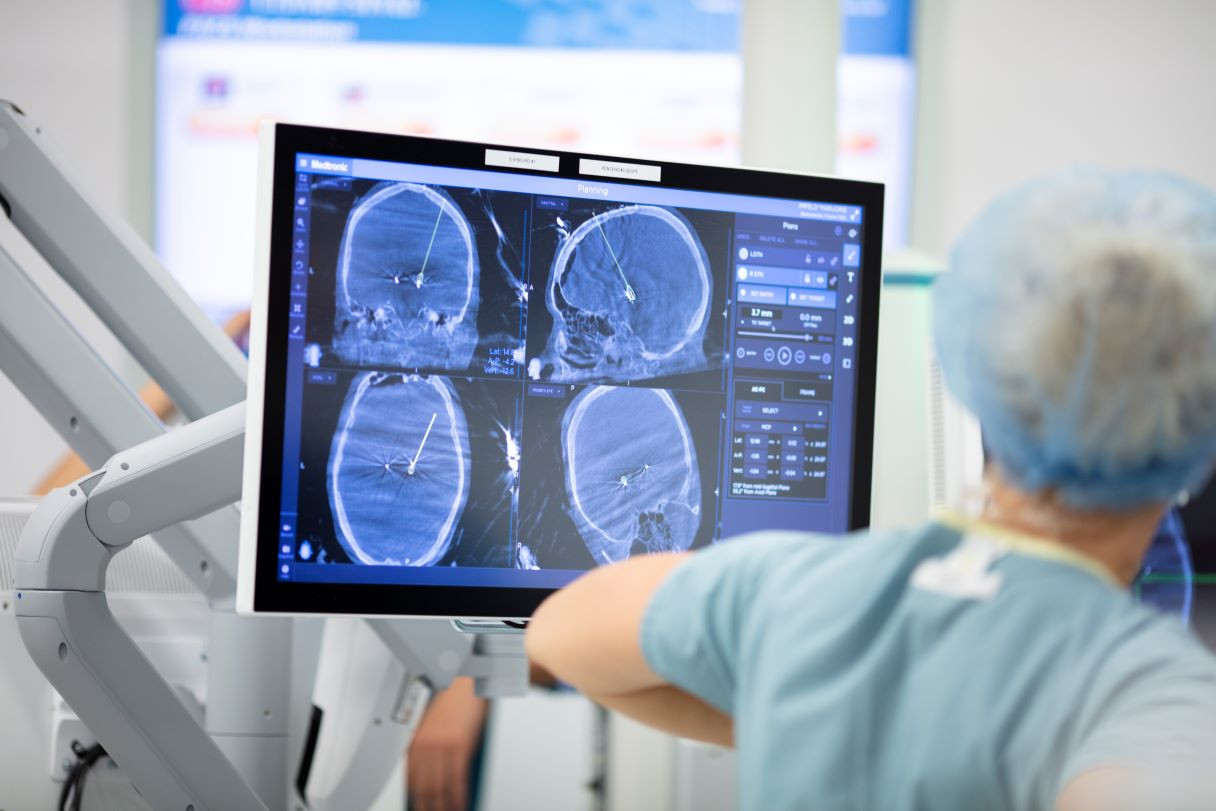More Precise Control of Deep Brain Stimulation Could Lead to New Uses
Images

Cedars-Sinai investigators, in a study published in the peer-reviewed journal Neuron, have shown that by varying the shape of the electrical waves used in deep brain stimulation procedures, they can produce controllable responses in individual brain cell populations.
This could lead to new applications for the therapy, allowing it to influence higher-level functions such as learning and memory.
“Deep brain stimulation has typically been used to overexcite or shut down all neurons in a target area,” said Costas Anastassiou, PhD, associate professor of Neurology, Neurosurgery and Biomedical Sciences at Cedars-Sinai and senior author of the study. “We found that by varying the shape of the electrical pulse waves we apply, we can selectively influence specific neuron types while leaving others unaffected.”
In the study, investigators applied electrical fields to individual cells in tissue samples from the visual cortex and the hippocampal regions of the brains of patients and laboratory mice. The investigators recorded the activity of excitatory and inhibitory neurons, which act as the gas pedal and brakes, respectively, in brain circuits.
Results showed that different electrical wave frequencies influenced the timing of spikes, which are changes in electrical voltage that travel down neuron fibers and are transmitted to other neurons. Anastassiou called spikes “the coin of communication between neurons.”
“We found that electrical frequencies that influenced one cell type did not necessarily influence another, and vice versa,” Anastassiou said. “Surprisingly, the effects on each cell type were the same in both brain areas we examined, and in both species—though more pronounced in humans than in mice.”
Given that previous research has found that higher-level functions in the brain require coordination and communication between different cell types, the ability to manipulate this communication could be of great importance, Anastassiou said.
“This study offers new understanding of how to stimulate the human brain to promote or suppress specific activity patterns, and could pave the way for new directions in basic research and clinical applications,” said Keith L. Black, MD, chair of the Department of Neurosurgery and the Ruth and Lawrence Harvey Chair in Neuroscience at Cedars-Sinai. “These results offer the possibility for electrical protocols that are more selective, more controlled, and allow for different parts of the brain neural network to be manipulated in different ways.”
Investigators are now working to determine the exact mechanisms required to produce various results in the brain, and to replicate their brain tissue experiments in living patients.
“This data supports the idea that electrical brain stimulation could be used in new ways that target specific groups of brain cells,” said Adam Mamelak, MD, director of the Functional Neurosurgery Program at Cedars-Sinai. “This gives us an exciting opportunity to imagine new uses for this therapy and the chance to address disorders involving learning and memory.”